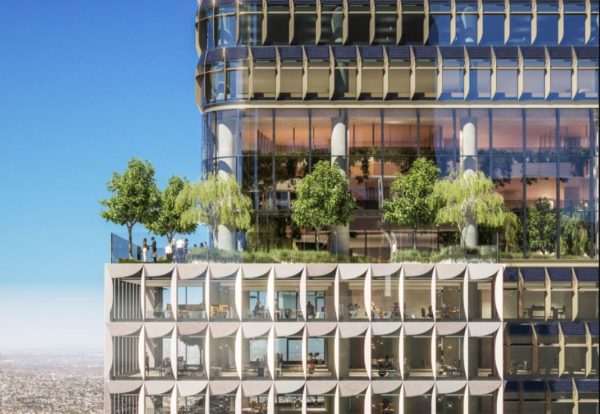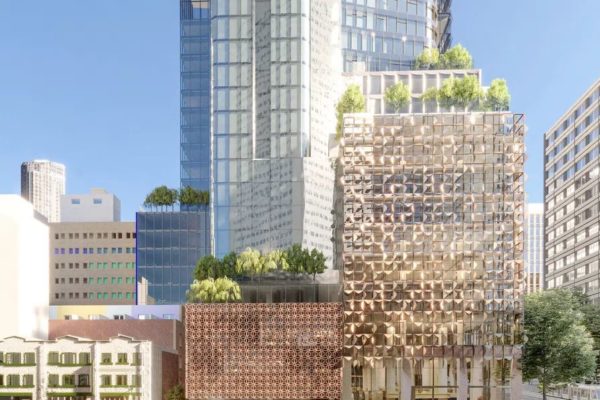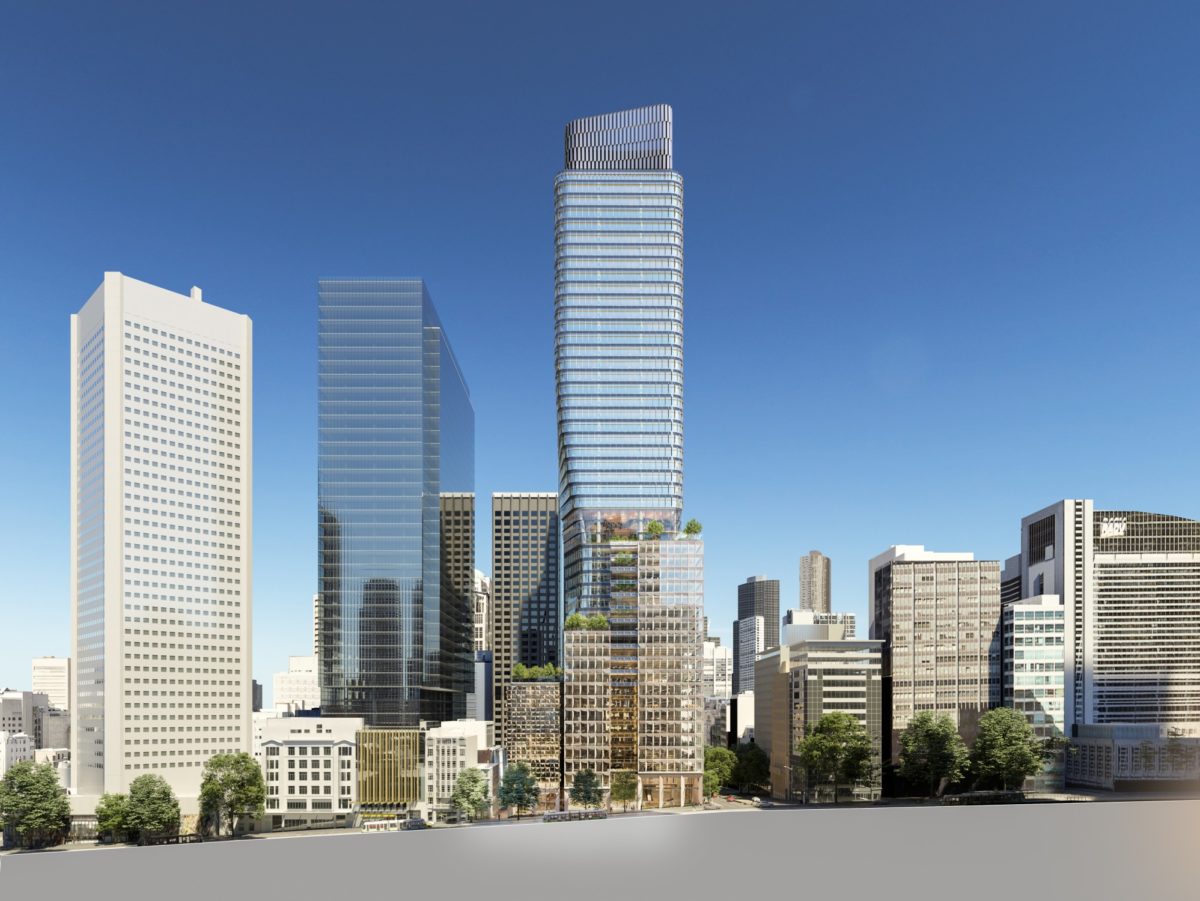Cbus Property, a subsidiary of superannuation fund manager Cbus, is aiming to establish a new benchmark in sustainable design with a facade featuring energy-producing solar PV panels to be wrapped around the 49-storey commercial tower it is developing in Melbourne’s city centre.
The property developer has lodged a new Development Application (DA) with the Victorian Department of Environment, Land, Water and Planning (DELWP) for the $1 billion commercial tower set to be constructed at 435 Bourke Street.
Designed by architectural firm Bates Smart, the proposed tower will comprise approximately 60,000 square metres of commercial office space across 48 levels, with 1,300 square metres of retail space, 116 car parks, a sky garden and several open-air terraces. The facade will be clad in “translucent, vertical glass photovoltaic panels”.
While neither Bates Smart nor Cbus Property responded to requests to provide technical details about the proposed renewable energy system, Bates Smart director Cian Davis said the facade will be clad with solar PV panels capable of generating one fifth of the fully electric building’s energy requirements. The balance of the building will be powered by off-site renewable electricity.
“The solar skin system is made up of translucent, vertical glass photovoltaic panels that will help generate 20% of the base building power,” Davis said in a statement.
“People working in the building will be able to look out the window and see where their energy comes from.”
The unveiling of the plans comes after new research from the ARC Centre of Excellence in Exciton Science found buildings in the City of Melbourne could generate almost three quarters of their own energy needs if solar technology is fully integrated into roofs, walls and windows.

Image: Cbus
The research, which examined the viability and impact of window-integrated PV alongside other solar technologies at a city scale, found comprehensive adoption of existing rooftop PV technology and the widespread deployment of emerging ‘solar windows’ and other building integrated PV (BIPV) could deliver up to 74% of the energy consumption which is required by the city’s buildings.
The research adds weight to a report released by the Australian PV Institute (APVI) which declared the business case for BIPV is stronger than ever, identifying it as a key avenue for increased market penetration of PV.
BIPV is yet to enjoy the same widespread deployment as roof-mounted solar modules that adorn more than 3 million homes across Australia, but the APVI believes the versatility of BIPV means it has enormous potential for growth and “offers huge potential to exploit roofs and facades as a local energy source”.
Davis said the collected energy coupled with all-electric operations will help the tower save 430 tonnes of carbon dioxide emissions per year, aiding Cbus Property’s commitment to net zero carbon, which was recently fast-tracked to early 2022.
“We didn’t want to design a building that would be outdated by its completion. Instead, it will cater to any work setting and scenario, engage with its surroundings, be open to the neighbourhood at the ground, and achieve the best tall commercial tower performance in Australia,” he said.
“When it welcomes its first tenants, it will be Melbourne’s most flexible, sustainable and, frankly, human commercial building. It is architecture designed for the future, which is already here.”

Image: Cbus
Cbus Property chief executive officer Adrian Pozzo said the “state-of-the-art” development will encompass four addresses on the corner of Bourke and Queen streets and will serve as a “vertical village” for more than 5,500 city workers.
Pozzo said the updated DA is an evolution of the previously approved tower, which was originally signed off by the DELWP in January 2020.
“Our vision is to create another world-class commercial building that represents Cbus Property’s leadership in resilient and sustainable development,” he said.
“With the onset of the pandemic, we were not content to rest on the laurels of our first DA and strove to future-proof the design of 435 Bourke … with a greatly enhanced focus on sustainability, wellness, collaboration, connection to the public community, nature and productivity.”
With demolition on all but one of the sites already completed, construction of 435 Bourke Street is expected to commence in 2022, pending approvals.
This content is protected by copyright and may not be reused. If you want to cooperate with us and would like to reuse some of our content, please contact: editors@pv-magazine.com.









1 comment
By submitting this form you agree to pv magazine using your data for the purposes of publishing your comment.
Your personal data will only be disclosed or otherwise transmitted to third parties for the purposes of spam filtering or if this is necessary for technical maintenance of the website. Any other transfer to third parties will not take place unless this is justified on the basis of applicable data protection regulations or if pv magazine is legally obliged to do so.
You may revoke this consent at any time with effect for the future, in which case your personal data will be deleted immediately. Otherwise, your data will be deleted if pv magazine has processed your request or the purpose of data storage is fulfilled.
Further information on data privacy can be found in our Data Protection Policy.